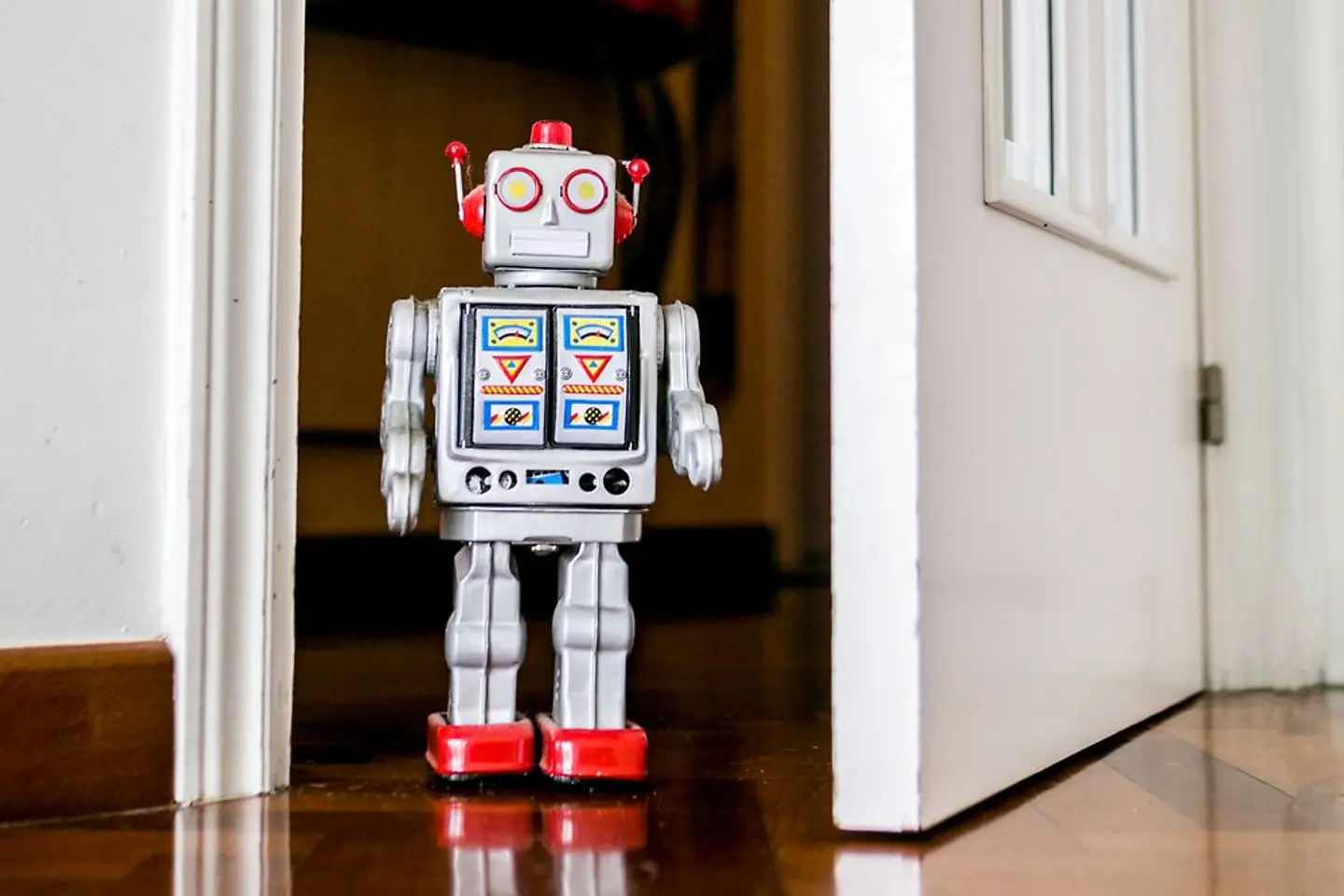
“You won’t be replaced by AI, but by someone who knows how to use AI,” says Oded Netzer, professor at Columbia Business School. AI technology will significantly impact the way we work. Workplaces must prepare their employees for this disruption. Teach them how algorithms can support them and how to make themselves indispensable with their AI expertise. But that's not all.

If you want to use smart algorithms profitably— advanced algorithms that can handle complex tasks — you need an AI strategy and vision. Think about what kind of human-machine interaction (communication between humans and machines via a user interface) your company wants to achieve. We recommend testing your AI maturity first with an AI readiness check: How do AI-related systems fit with your existing digitalization journey? Is your IT infrastructure AI-ready, and does it offer sufficient storage space and computing capacity?
Companies also need to look at their data’s AI potential. This is because they need a suitable structure for artificial intelligence. Workplaces can only take off with generative AI if they have an enriched, secure, and fair database. In the context of artificial intelligence, fair means a database that avoids or mitigates bias and discrimination.
Look at your organization’s processes before deciding on specific AI models or AI applications. Where are the challenges in the workplace? What is your workers’ knowledge in areas such as data analysis or large language models, and what do they need to learn? What do you want to improve with AI-powered systems and machine learning? For example, automate and personalize customer interactions, analyze large amounts of data to produce actionable insights, automate manual processes to improve productivity, aid problem-solving, undertake tasks that normally require human intelligence, or support research and decision-making.
But there is one aspect that workplaces must not neglect in all of this: sustainability. According to a study1 by the University of Massachusetts, training a large language model consumes as much energy as the average US citizen in 17 years. Data scientist Alex de Vries from Amsterdam compares the energy consumption generated using AI-based search engines with that of entire countries. This means that we need to address the issue of green IT so that workplaces can use digital technologies sustainably and economically.
My team wants to use the potential of intelligent algorithms and other AI capabilities to make business more climate and environmentally friendly in the future. In a pilot project, for example, we are testing how we can make better use of the hardware in data centers with the help of machine learning. We want to distribute workloads more intelligently to reduce data centers' CO2 emissions.
Generative artificial intelligence, which is trained to generate "new" content such as texts or images synthetically, has an enormous hunger for energy. This hunger is why the sustainability aspect is just as much a part of companies' strategy as training plans in the art of prompting. After all, if you want your workers to get good answers from an AI-driven system, they must be able to ask it the right questions and know which criteria it must fulfill to be considered trustworthy. But the workforce should also understand how they can reduce the environmental footprint of technology.
According to the latest BITKOM training study, one in two workers criticize the training offered by their employer when it comes to AI. This finding is alarming - after all, a company's success depends on its employees keeping pace with technological developments and, in the best case, being able to drive them forward.
We all need more knowledge to correctly assess AI's requirements, opportunities, and limitations. Continuous learning is a must because artificial intelligence is set to become a key technology. Businesses and society cannot afford to leave people behind in their AI transformation. New technologies are not a fringe area for experts — they affect us all. Companies and their employees must, therefore, prepare to invest time in such coaching and bear the following points in mind:
Moreover, consider hiring initiatives. In a competitive marketplace, it may be hard to identify people with the experience and understanding you would like, but you can ensure you hire workers with the enthusiasm to learn and provide them with the opportunities to upskill. Such hiring initiatives will, in turn, make you a more attractive employer, especially if you also support hybrid work or remote work. After all, AI supports hybrid and remote working by providing tools and features that enhance communication between people, wherever they are.
In the context of AI, smart dialogues (or conversational AI) involve natural, flexible, and open-ended interactions between humans and machines, using natural language as the primary mode of communication.
Prompting: We need to practice the art of prompting. This gives the AI system the proper context. Example: The better our prompts, the less CO2 we produce.
Ethics: How do we deal with AI responsibly? That also needs to be learned. Responsibility means, for example, that we recognize and correct any possible bias in the data during training and prompt without discrimination.
Data protection: What information can I share with an advanced chatbot like ChatGPT from OpenAI? What information is confidential and should only be accessed and shared in a secure AI environment? Workers also need to know about this.
Sustainability: Generative AI consumes a lot of energy. That is why we should always ask ourselves: Is its use worthwhile in this particular instance? Is there another way to reach our goal? For example, we don't require AI for simple multiplication; we only need a pen and paper or a calculator.
1 Energy and Policy Considerations for Deep Learning in NLP, Emma Strubell, Ananya Ganesh, Andrew McCallum, 2019, USA
2 Highlights From Gartner IT Symposium/Xpo 2023 Opening Keynote: The Next Era- We Shape AI, AI Shapes US, Gartner, 2023, gartner.com